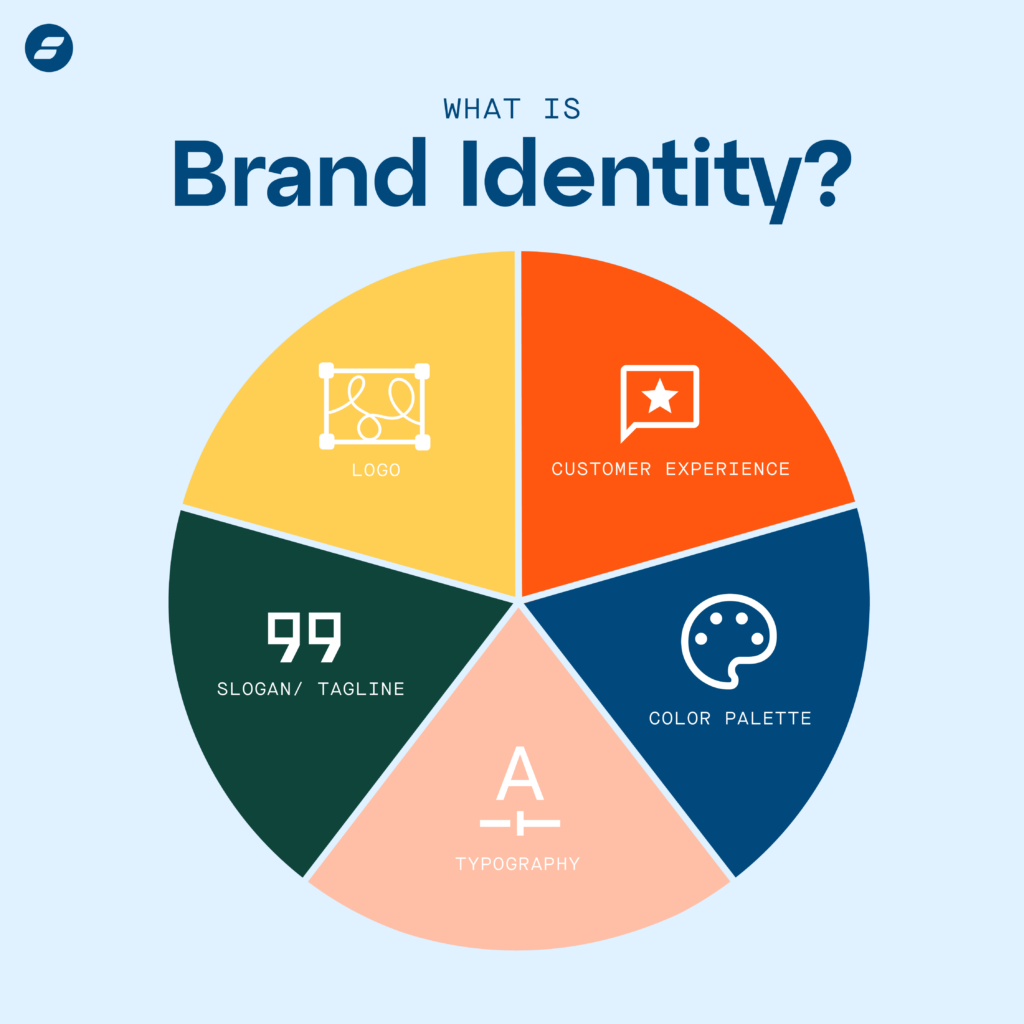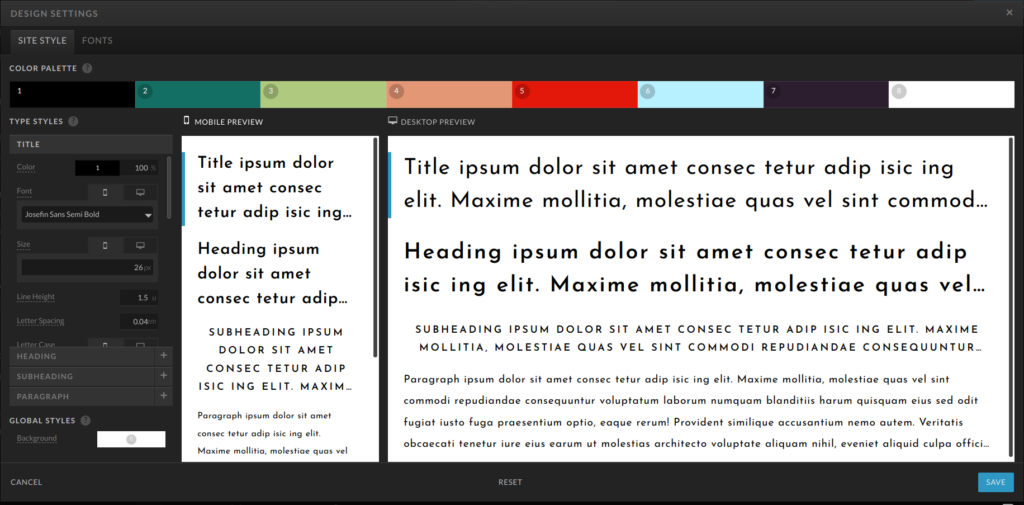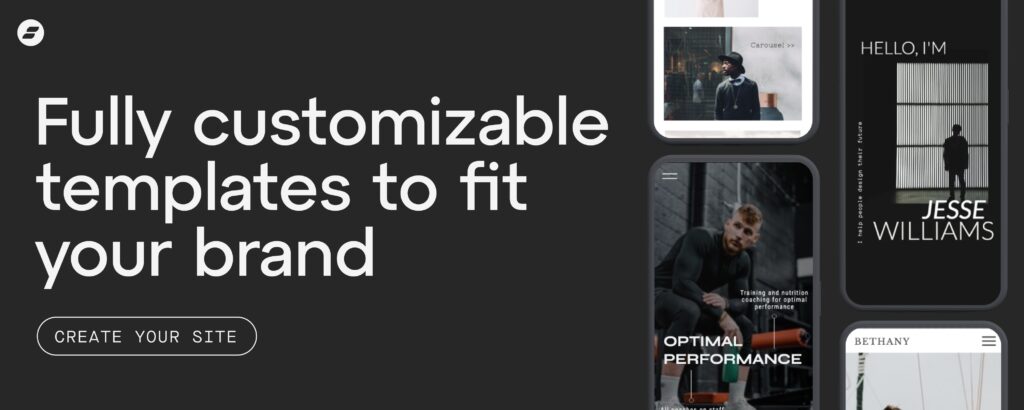Ah, branding — it’s so important for your business’s image. When your business is easily recognizable to your target audience and the public at large, it’s easy to establish the “know, like, and trust” factor you need to cultivate a loyal customer base.
If you’re going to achieve this level of consistency, you need to start by laying some guidelines. That’s why so many businesses create a brand style guide: an outline dictating everything from your color palette to what kind of language you use.

Whether you're a successful businessperson, a creative entrepreneur, a seasoned marketer, or simply someone who appreciates the power of a cohesive visual identity, you’ll want to take note: Building a memorable brand isn't just about having a snappy tagline. It’s about figuring out a personality for your business and portraying that consistently to your audience.
What Is a Brand Style Guide?
At its core, a brand guide is a comprehensive document outlining the visual and creative elements that make up a brand's identity. It's a set of guidelines that ensures every piece of content created by your brand is consistent with your core values, personality, and aesthetic.
This will typically include details such as your color palette, typography, imagery, logo usage guidelines, and overall tone of voice. By defining these elements, your style guide ensures everyone who creates content for your brand, whether an in-house team or external partners, understands how to represent your brand consistently and effectively.
A well-crafted brand guide can benefit you in several ways. It creates a unified and recognizable visual identity, helping you stand out in a crowded market. It also promotes a sense of professionalism and attention to detail, which fosters trust and loyalty among customers.

Elements of a Brand Style Guide
No two brand style guides are going to look alike. For some brands, their biggest priority might be the visuals. They are particular about not only their color palette and logo but also specific photos and graphics.
For another brand, it might be all about the language. They have specific words and phrases they use all the time. They also might have words and phrases they definitely avoid.
So, if you’re starting to create a style guide for your business, here are some elements you should consider including.
1. Brand Strategy
Brand strategy is a long-term plan for your business. Developing your brand strategy often requires you to consider your positioning, or how you want your brand to be perceived by people.
If it helps, you can think of your brand strategy as the story of your business, which covers:
· Mission: Why did you launch your business? What need(s) you fill?
· Vision: What do you ultimately see your business becoming? How do you hope to develop and grow?
· Core Values: What is important to your business beyond your product and profit? What values do you align with that will resonate with customers?
· Target Audience: When you picture somebody buying your product, what do they look like? What are their personality and lifestyle? What kind of community are they part of?
[Pro tip: Adobe recommends coming up with nicknames for your perceived audience members so you can keep their distinct personalities (and wants and fears) at the forefront of your mind while you’re developing your brand.]
2. Messaging
To communicate all of this with your audience, you need to perfect your voice—the words and phrases you use. In other words, if your brand were a person, how would they talk?
You can develop your brand voice by considering:
· Tone: This is the emotional inflection or attitude you use in your messaging. Are you casual and friendly? Or more straight-edge and no-nonsense?
· Personality: How would you categorize the character of your business? Are you a joker? Maybe a wise mentor? A fun-loving flirt?
[Pro tip: 99 Designs suggests developing your brand personality by coming up with a list of adjectives you would use to describe your brand.]
· Tagline/Slogan: Try to sum up your business in a few memorable words that will resonate with your audience, such as Nike’s “Just Do It” or L'Oréal’s “You’re Worth It.”
· Dictionary: Think of common words or phrases that your brand would use (and just as importantly, phrases you would not use).
3. Visual Identity
Now it’s time for us to talk about the visuals. People consume a lot of information by what they see — so what do you want your visuals to communicate to them?
Are you hip and funky, or posh and sophisticated? Are you more of a summer brand or a winter brand? Does your brand make people feel excited and wild, or calm and relaxed?

You can convey all these aspects of your brand with:
· Color Palette: Choose three or four colors, but ideally no more. Two of the colors can be primary colors, and one or two can be secondary colors. Make sure you get the exact hex code for each color so you can replicate it consistently everywhere you need it.
· Graphics: These visual elements can include everything from logos and illustrations to photos and even patterns you typically use. Are there specific places you will use these graphics? What about places where you won’t use them? You can even get specific about the amount of white space between your graphic and surrounding lettering.
· Font: Be sure to designate two or three fonts you’ll use — perhaps two for headlines and one for body copy. In addition to the fonts themselves, you want to consider the weight and spacing you use with your text.
· Mood Board: Need help developing ideas for your brand’s visuals? Create a mood board by collecting photos and other graphics that convey the mood you want to create with your brand. Study the photos and pick out colors, textures, patterns, or other elements that make you feel the way you want your audience to feel.
Why Do I Need a Brand Style Guide?
Think about some of the brands that are important to you. Maybe you swear by Apple products, or you get your caffeine fix exactly how you like it at Starbucks. And you know how to recognize these brands when you see them — whether you’re seeing one of their brick-and-mortar locations, their social media accounts, or ads for them in print.
You may think style guides are important only for big brands like these, but even your small business will benefit from sticking to your branding. You want to make sure you’re consistent in everything you do.
Here are three important reasons why you should create a brand style guide.
1. Create a Strong Brand Identity
A brand is part of your professional image. When you’re consistent, people know you are serious and you value the perception of your customers. Brand identity also helps with recognition — people know you as soon as they see you, and they know what kind of quality they can expect.
2. Ensure Your Team Is on the Same Page
If only one person could handle all the customer-facing interactions for your entire business! But that’s just not possible most of the time. A brand style guide ensures everyone knows your brand and can implement the elements. Even if it’s just you running your business, having a guide for yourself means you don’t have to worry about accidentally changing something (or have to double-check what you did last time).

3. Know Exactly How to Represent Your Brand
When you put everything down on paper (or, more likely, in a PDF) in your brand style guide, you establish elements of your brand that you might not think about otherwise. You’ve thought about it, you’ve made a decision, and you’ve cemented the style rule by writing it down. This process can be incredibly helpful if you’re a talented businessperson who just doesn’t consider yourself naturally good at design or copy!
How to Create a Brand Style Guide
We’ve talked about what goes into a brand style guide, and we’ve convinced you it’s important to have one. Now there’s just one question left: how?
Creating a brand style guide is a lot easier than you probably think. Grab a pencil and a sheet of paper for brainstorming — then go through these steps.
1. Decide Which Elements to Include
You don’t have to include all the elements listed above in your style guide. If you don’t ever plan to use illustrations or photos, you can probably eliminate that part of the style guide. Maybe you don’t have a logo just yet. Or you know you want to have a professional tone to all your messaging, but there aren’t specific phrases you want to pepper your copy with.
All of that is okay. Focus on the elements that are important to you now — and return to the guide later when you’re ready to incorporate those other elements.
2. Create the Guide
Now, for the actual creation of the guide! Ideally, this will be done by a professional designer, whether you or a contractor. Don’t be afraid to hire this process out — even if you’re good at design, an outside perspective can pull your whole brand together in a way you might not be able to, being so close to the business. (Plus, outsourcing will free up your valuable time!)
If you do decide to create the guide yourself, use whichever design tool you prefer — Canva, InDesign, etc. Be sure to get a second set of eyes (or more) on the guide before finalizing it. For example, if you work with employees or contractors for your design or copywriting, you can enlist their help in pinpointing those unique elements of your brand.
3. Review with Your Team
The last thing you need to do (and maybe the most important) is to review the brand style guide with your team if you have one. Forbes notes that a brand guide is created for the benefit of your whole team, so everyone involved with your business understands what your brand stands for. You can also share your brand style guide with contractors, such as a web designer or a copywriter, so they can get a better sense of what you’re trying to convey.
Your branding will evolve with your business, so don’t be afraid to revisit and update your guide as needed — don’t just let it sit in a Google Drive folder! As you make necessary changes to keep up with the times, consider announcing those changes on social media, so your loyal customers will notice and understand why your image is changing a bit. Think of it as a grand reveal for your new logo or color palette.

Build Your Brand with Showit!
Once you’ve figured out your brand and built your brand style guide, you can begin to implement it everywhere — from your office signage to your social media presence to your printed pamphlets and brochures.
Most importantly, there’s your website. When you create your website with Showit, you’ll get access to built-in tools that will help you customize your website according to your brand and showcase exactly what makes you unique.
Curious to check it out? We have a 14-day free trial, no credit card required. Why not get started on creating your dream-come-true, brand-specific website today?

Chris is multitalented, being able to play a number of instruments, and having an inclination towards creative design, AND technical know-how. He cheerfully brings his Swiss army knife of skills to our designer community.

